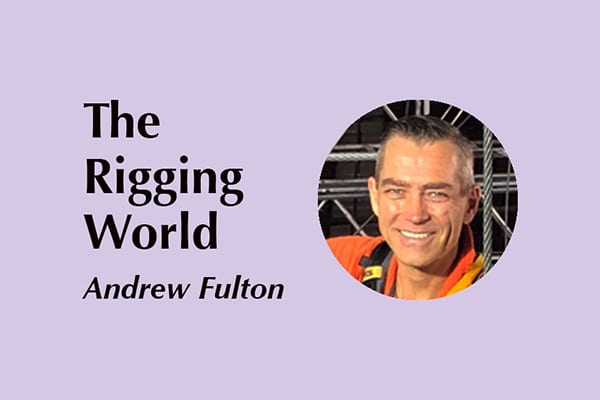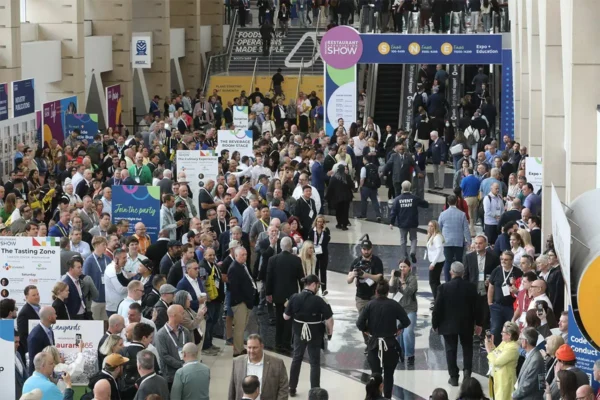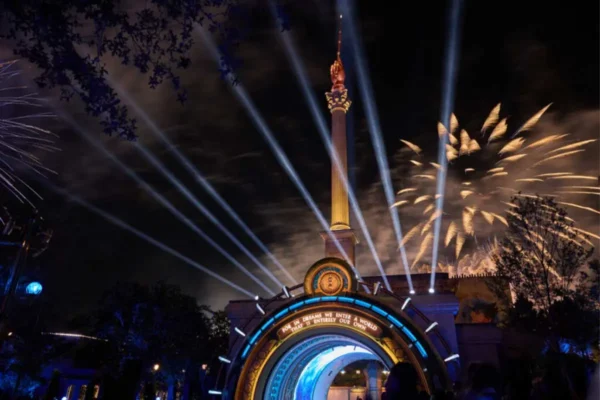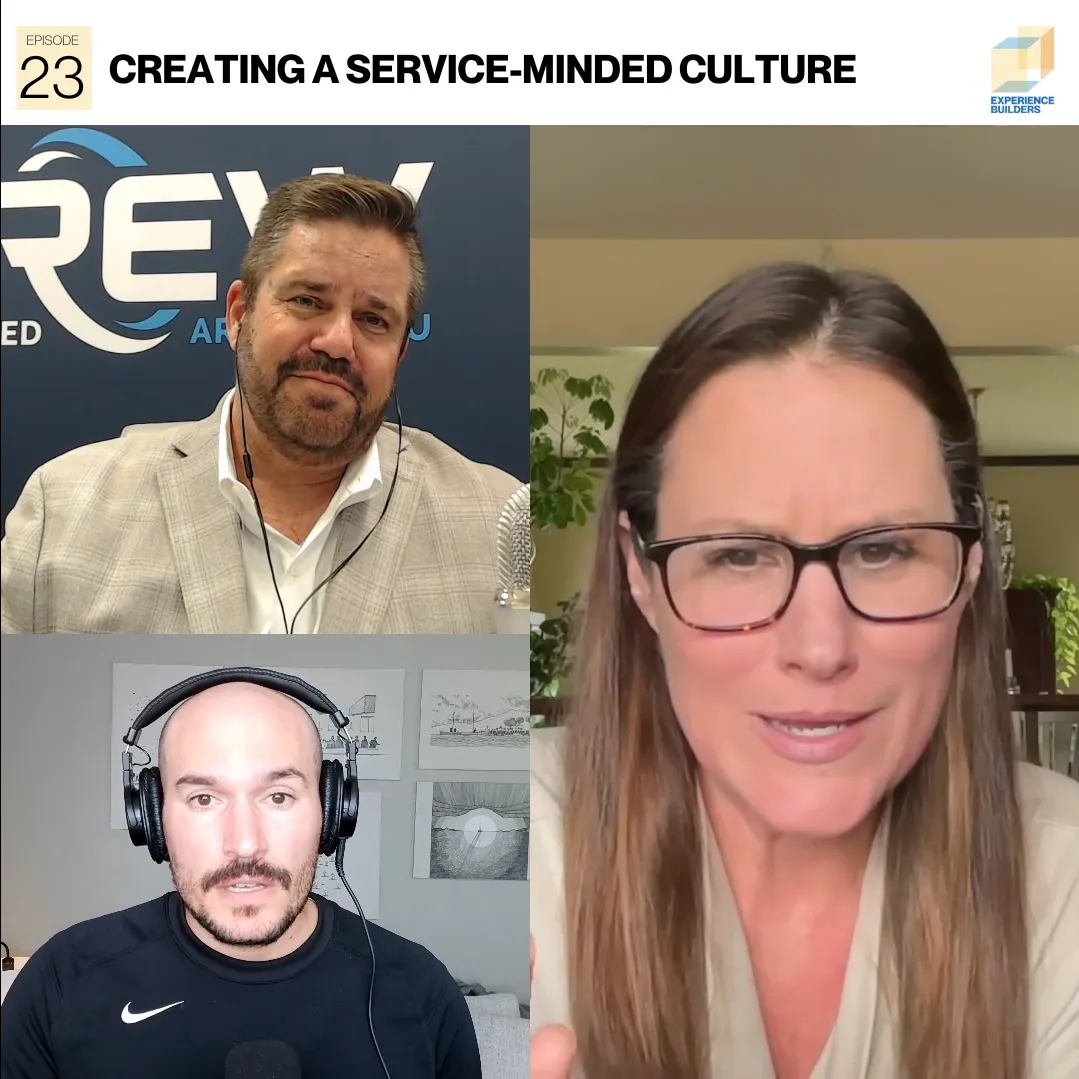The Rigging World
by Andrew Fulton
Three things go without saying: We’re all looking forward to getting back to work so we can provide exceptional service to our clients and partners. We know we provide exceptional service by staffing our teams with experts. And we know team members become experts through training and education.
Your team members can find the online training and education needed to become experts at ITI (Industrial Training International). Founded by people whose desire is to help others be good stewards of their gifts, ITI continuously exhausts all efforts to lead the world in training skills in order to save lives and improve the industrial activities of the employers they serve. You want experts on your teams, and that means you want ITI graduates!
Experts understand the need for the right tools, gear and hardware including the importance of understanding the specs associated with one of the most used, but least understood, pieces of rigging hardware in our industry: the eyebolt.
Almost all tradeshow booths use eyebolts to suspend signage and scenic pieces. They’re key to exhibit construction—and it’s a serious issue if the right ones aren’t included in the construction hardware package. In other words, having the proper eyebolt is a big deal.
A big deal because this missing piece of hardware can bring a project to a standstill and compromise the job’s schedule and work flow. Competent riggers will not use local hardware store substitutes—they’ll hold out until the right eyebolts show up.
A rigger must leave the worksite to go get the proper eyebolts—those specifically designed for overhead lifting—from the show’s “General Contractor.” Not only is the workflow interrupted, but you are then charged a substantial fee for those eyebolts (an expense you hadn’t anticipated). And that’s the other sobering reason why having the right eyebolts is a big deal—not having them will cut into your profit margin.
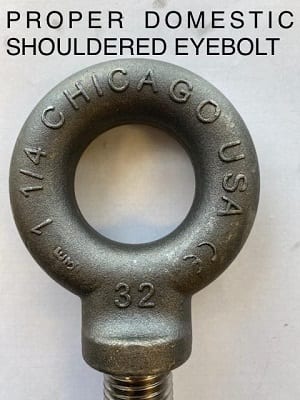 What is the proper eyebolt that your rigger will hold out for? Here’s what makes it so special:
What is the proper eyebolt that your rigger will hold out for? Here’s what makes it so special:
- Made domestically is always the preference, from reputable manufacturers such as Chicago Hardware, Crosby, Campbell or Columbus McKinnon (CM).
- It must be forged and shouldered.
- It must have the size/diameter and manufacturer or their trademark clearly identified on it. This important information will be embossed on the eye.
These North American manufactured eyebolts aren’t available at your local hardware stores. Forged and shouldered eyebolts are available from “rigging shops,” such as Silver State Wire Rope & Rigging in Las Vegas, for example.
It is important to know that most rigging shops where legitimate rigging hardware is purchased, aren’t open on the weekend. This fact makes it vitally important that you have all your hardware needs well thought out and purchased before arriving onsite. Doing so prevents the above-mentioned scenario (delayed workflow/schedule and having to pay inflated hardware costs your General Contractor is sure to charge).
 You can see why you want all team members trained in the basics of rigging hardware. A savvy sales team who knows that domestic hardware is a bit more expensive, will include this cost in the project estimate. Your foreman in charge of building the exhibits in the shop will know to send out the proper eyebolts in the first place—only those that qualify for overhead lifting. And finally, your onsite management team that is building the exhibits on the show floor, will know to doublecheck that every facet of the project is paired with the correct hardware. With all these pieces handled, your build will go smoothly.
You can see why you want all team members trained in the basics of rigging hardware. A savvy sales team who knows that domestic hardware is a bit more expensive, will include this cost in the project estimate. Your foreman in charge of building the exhibits in the shop will know to send out the proper eyebolts in the first place—only those that qualify for overhead lifting. And finally, your onsite management team that is building the exhibits on the show floor, will know to doublecheck that every facet of the project is paired with the correct hardware. With all these pieces handled, your build will go smoothly.
No one wants to explain to a client that the reason their project is at a standstill is because the eyebolts supplied for the project are not rated for overhead lifting and the riggers will not use them. That client is likely to wonder “What kind of outfit is this?!” Not a good way to establish credibility or a build a long-term relationship.
But when all team members are rigging educated, everyone profits. The job is completed safely and on schedule, and you have happy and satisfied clients that are already asking you to take a look at their next project. That’s how you Rig For Success!
Andrew Fulton is a 23-year member of IATSE Local 720 and is currently the Lead Production Rigger at UNLV’s Thomas & Mack Center. Andrew manages projects for the Las Vegas PRG office and is also part owner of Rigging International Group, a rope access training and services company established in 2015. He offers rigging training & education through his entertainment rigging school, Rig For Success. Contact him at andrew@rigforsuccess.com.
This story originally appeared in the Sept./Oct. issue of Exhibit City News, p. 38. For original layout, visit https://issuu.com/exhibitcitynews/docs/ecn_sept-oct_2020






